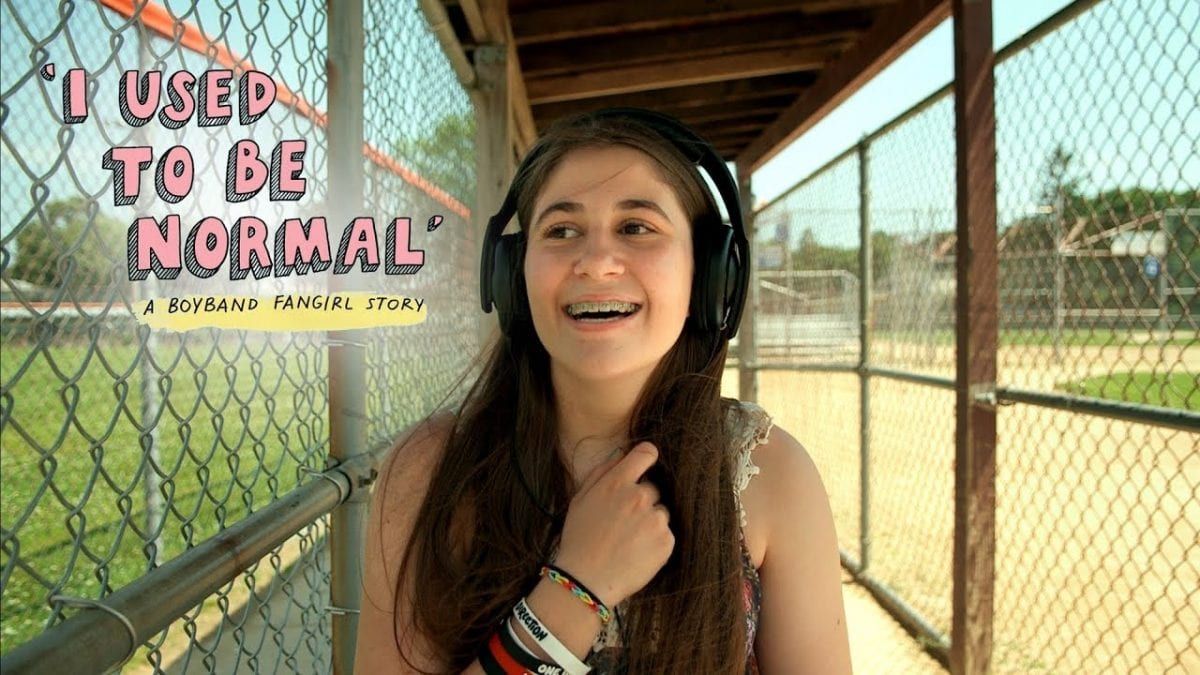“Did you?” asked the woman at the box office as I asked for my ticket for I Used to be Normal. I considered lying, but decided against it. “Not really”. I’ve been an obsessive fan of movies since I was 8 years old but, while some of the kinds of films I love best are (especially as a 37-year-old man) not exactly considered cool, I’ve never felt judged or that I should hide my enthusiasms. That seems to be one of the things that is different for at least half of the women at the centre of this film about girls and women’s love for boybands (in these cases The Beatles, Take That, The Backstreet Boys and One Direction). That was just one of the ways that I Used to be Normal was both an eye opener and surprisingly poignant.

The fans we meet are at different stages in their lives across the several years of filming. Dara (Take That) and Sadia (Backstreet Boys) are in their thirties and the bands they loved as children and teenagers are now in another phase of their careers. Susan (The Beatles) is a grandmother, whose band may be long gone but now occupy a completely different place in pop culture than most boybands and Elif (One Direction) is introduced as a sixteen year old who is basically the stereotype that comes to mind when you say ‘fangirl’, crying about the perfection of her favourite 1D member’s hair and drawn by the fact that when the band sing “That’s what makes you beautiful”, it feels as though they are singing directly to her. Each of the women processes their love for their band in a different way. Sadia, while she still loves BSB and their music, definitely now has an ironic distance from things like the website she set up as a teen, which gives her many of the film’s biggest laughs. Dara, a brand analyst, has the clearest picture of how boybands function, laying out the recipe in a chart towards the start of the film. Susan is looking back at her youth with more distance and from a point of view of being a fan of the first boyband, if not one of the very first fangirls. Elif, in contrast to all of them, is just IN IT; the hormonal angst, the joy of the music, it’s all – initially – entirely present tense. This is where the film’s title comes from, something she says in a Youtube video reacting to a 1D concert DVD.
The thing that is most important about I Used to be Normal is the fact that it values the opinions and enthusiasms of these women. I’m as guilty as anyone of having been very sniffy about bands like this and their fans in the past, but just because something isn’t for me, doesn’t make the emotional connection it forges with other people worthless or make their taste somehow defective. What’s also clear here is how important this music has been to these women and how it has enriched their lives in ways beyond simply loving the bands. Elif’s youthful crushes will stay with her, but from her love of 1 Direction she develops a love of and expanding taste in music. Susan reveals a deep emotional connection that makes some early Beatles songs hard to listen to, despite her love of them, and talks about how the music has seen her through tough times. Sadia credits her Backstreet Boys website and the lengths she went to to find information for it for laying the foundation for her work as a journalist. Dara talks about using Take That’s music – without identifying it – in presentations to make people feel good. In maybe the film’s most moving moment, she notes the importance of a major key chorus in life as well as in song. That’s when it all clicks.
I Used to be Normal is a joyous and warm hearted film that, while it explores a specifically female type of fandom (and it’s important that it does, given the lesser value we put on that as a society), will strike a – major – chord with anyone who’s ever been a fan.

